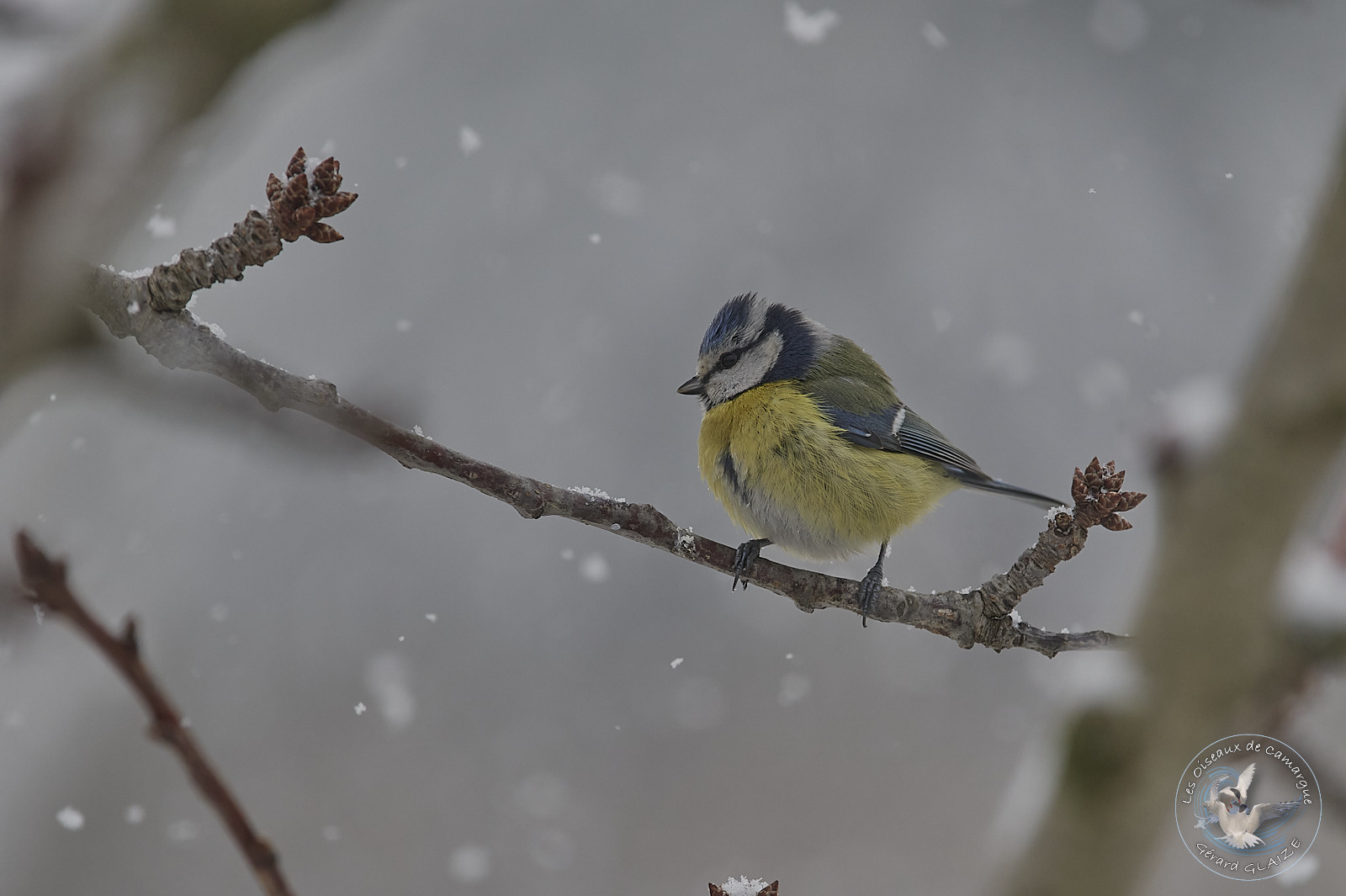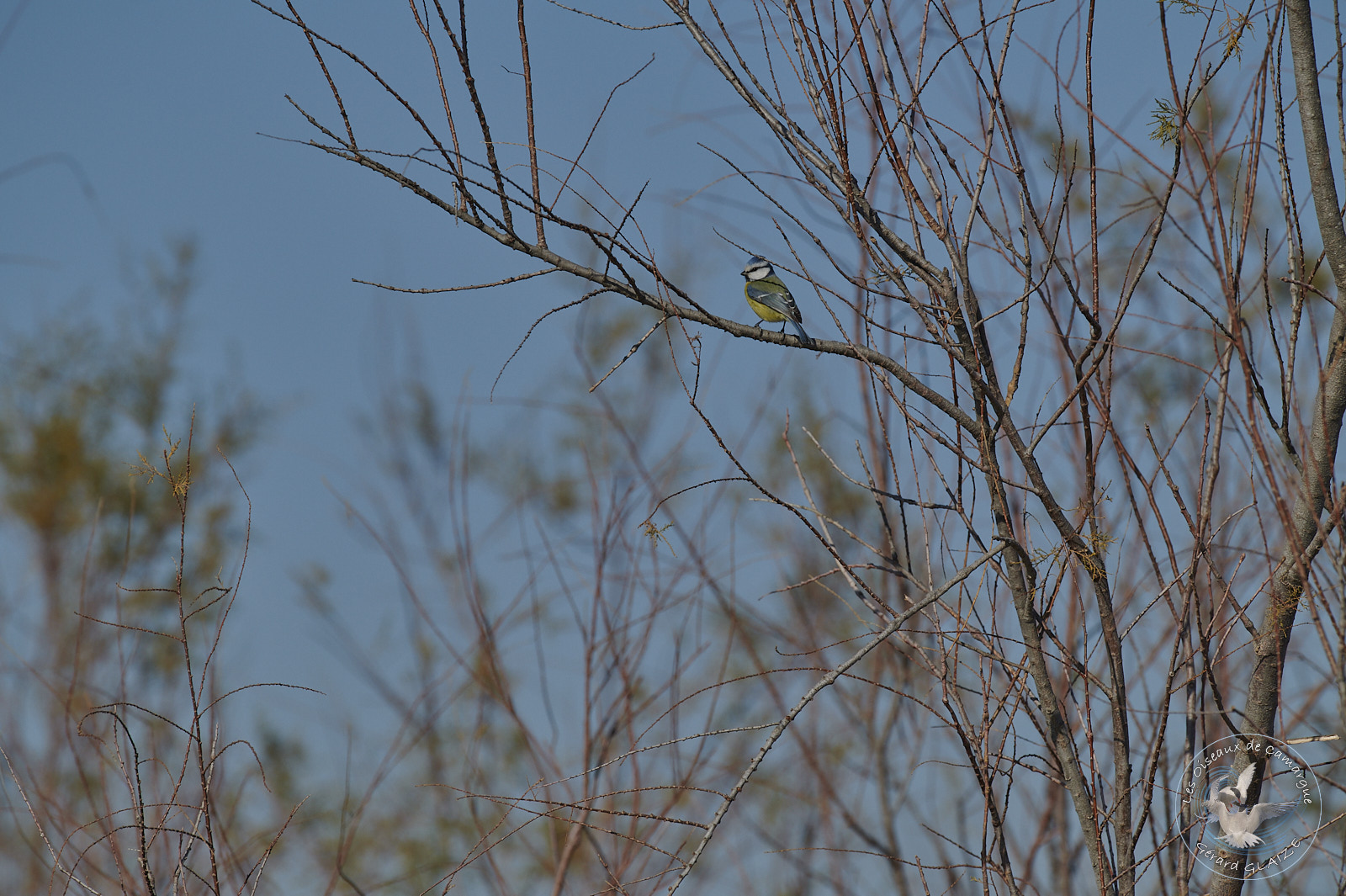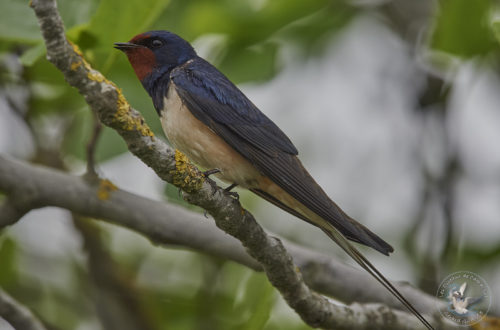Eurasian Blue Tit
Easily identifiable with its small size, its slightly chubby shape, its thin legs, its tiny beak, and its pretty plumage, the Blue Tit is a passerine bird from the Paridae family.
However, it is smaller than the Great Tit. It is characterized by its blue cap, back, wings and top of its tail, its white cheeks and forehead, a black bandage over its eyes, its yellow chest and belly, the latter sometimes being marked with a very thin black line. The juvenile is duller than the adult.
The Blue Tit is also a very active and agile little bird. It is constantly moving in search of its food, often in very acrobatic positions.
The Blue Tit is one of the ten very small passerine birds found in France.
Eurasian Blue Tit
Scientific name : Cyanistes caeruleus
Family : Paridae
Length: 11 cm – Wingspan: from 12 cm to 14 cm
Weight : from 8 gr to 14 gr
IUCN Conservation Status: LC
Flight
The blue tit tends to flutter here and there. It has a fairly slow and somewhat hesitant flight, due to a succession of rapid beats interspersed with brief pauses. It makes short flights from one tree to another, stopping abruptly on a perch. During the breeding season, the male also performs aerial displays to attract females. But during migratory movements, the small loose groups that it then constitutes fly over longer distances and quite high, with a more sustained flight.
Habitat
The blue tit is also present in almost all habitats in deciduous regions, including woods and gardens. On the other hand, it is absent in pure coniferous forests. It can be found in the mountains up to 1200 meters above sea level. The blue tit is sedentary in its habitat. In addition to this, it shares its habitat with other species of tits such as the great tit.
Regime – Diet
It feeds mainly on insects and larvae in summer. Lepidoptera caterpillars are an important part of its diet, especially when raising the young. The rest of the year, in winter in particular, it becomes granivorous. During this period its menu also consists of berries or buds, as well as oilseeds.
Arborists who want to limit the use of pesticides sometimes place tit boxes so that they eat apple worms and aphids.
Nesting
The blue tit nests from April to July with 1 to 2 broods per year. The nest is placed in a tree hole, wall cavity or in a nest box. She interweaves the moss and twigs of her nest with lavender, mint, immortelles, and half a dozen other fragrant herbs. These plants are known to contain terpene compounds such as camphor or eucalyptol, and have antiseptic, insecticidal or fungicidal qualities. The clutch is thus made up of 7 to 12 white eggs spotted with red, whose incubation lasts 12 to 14 days. Only the female incubates while the male takes care of the provisioning. The juveniles take flight approximately 3 weeks later.
Migration
The blue tit is a partial migrant in Europe. While some blue tits migrate south, most winter in available cavities near their nesting territory and visit feeders at this time to supplement their food.
Protection
IUCN conservation status of Least Concern (LC), the blue tit is not an endangered species in France or Europe.
The blue tit, however, benefits from total protection on French territory since the ministerial decree of April 17, 1981 relating to birds protected throughout the territory.
Song
The blue tit is said to zinzinulate or zinzibulate. Its cry becomes shrill when danger approaches. She thus warns those close to her or seeks to intimidate her adversaries; her repertoire is very diverse and difficult to transcribe.






















